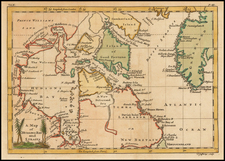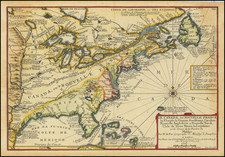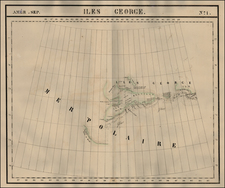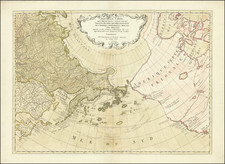Fine pair of maps on a single sheet, focusing in on Vancouver and British Columbia, two of the earliest obtainable maps to focus on this region.
'The Weekly Dispatch' newspaper between the years 1856 and 1862 included in each edition a map of a part of the world. During this period a total of 118 maps were issued. The maps bear the distinctive sign of a half globe with the figure of Mercury above. The engravers varied but included John Dower and Edward Weller.
In 1863 'The Dispatch Atlas' was published which contained a series of English county maps. The two were combined in 1865 as 'Cassell's Complete Atlas'. With many maps in a large scale of areas not often seen, including a number a town plans.
Formation of British Columbia
The history of British Columbia's formation in the mid-19th century is a compelling saga of ambition, exploration, and unity. Over a period of 20 years, the region witnessed dramatic changes, steered by influential figures whose visions and decisions left an indelible mark on the province's trajectory.
-
Colonial Beginnings (1850s):
- 1850: Under British oversight, the Colony of Vancouver Island was established. Entrusted to the Hudson's Bay Company, its Chief Factor, James Douglas, played a dual role as both a company officer and the colony's first governor.
- 1858: The Fraser Canyon Gold Rush brought an influx of hopefuls, primarily from California. The surging population necessitated a structured administrative framework. Thus, the Colony of British Columbia was born, with New Westminster as its capital. James Douglas became its governor.
-
Union of the Colonies (1860s):
- As the 1860s rolled in, the economic strain and the logistical challenges of governing two colonies prompted discussions about their union. In 1866, the Colony of British Columbia emerged, representing a united front with Victoria as its capital.
- The subsequent governorship passed to Frederick Seymour.
-
Towards Confederation (late 1860s-1870):
- The idea of joining the newly formed Canadian Confederation of 1867 began to gain traction. This move promised economic benefits, a formidable defense alliance, and the ambitious project of a transcontinental railway.
- Advocates such as Amor De Cosmos and Joseph Trutch, alongside Canada's first Prime Minister, John A. Macdonald, and key negotiators like George Anthony Walkem and Robert Beaven, were instrumental in framing the terms that would see British Columbia become a part of Canada.
- By 1870, these terms were set in stone, paving the way for the province's formal entry into the Confederation in 1871.













![Carte Reduite Des Costes Orientales De L'Amerique Septentrionale . . . contenant L'Isle Royale . . . La Nouvelle Angleterre et la Nouvelle Yorc . . . MDCCLVII [with Plan of Boston Harbor] Plan du Havre de Baston](https://storage.googleapis.com/raremaps/img/small/80006.jpg)
![[Calgary / Western Canada] Motor Roads in Western Canada and United States Connections Leading to Calgary & Canadian Rockes](https://storage.googleapis.com/raremaps/img/small/92594.jpg)